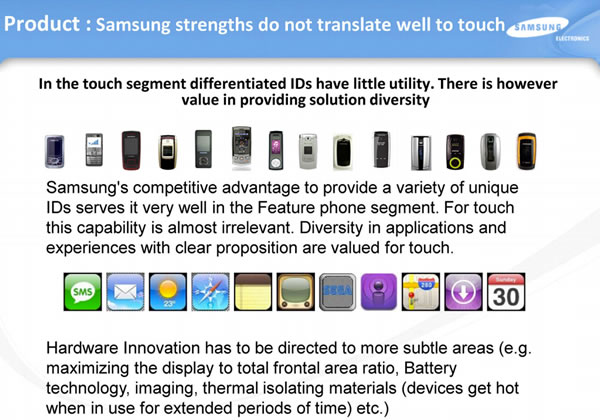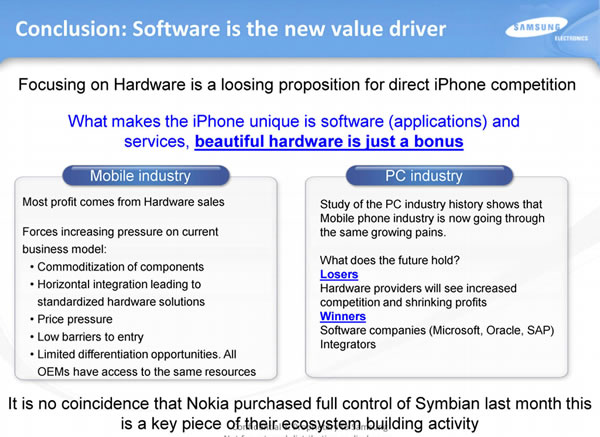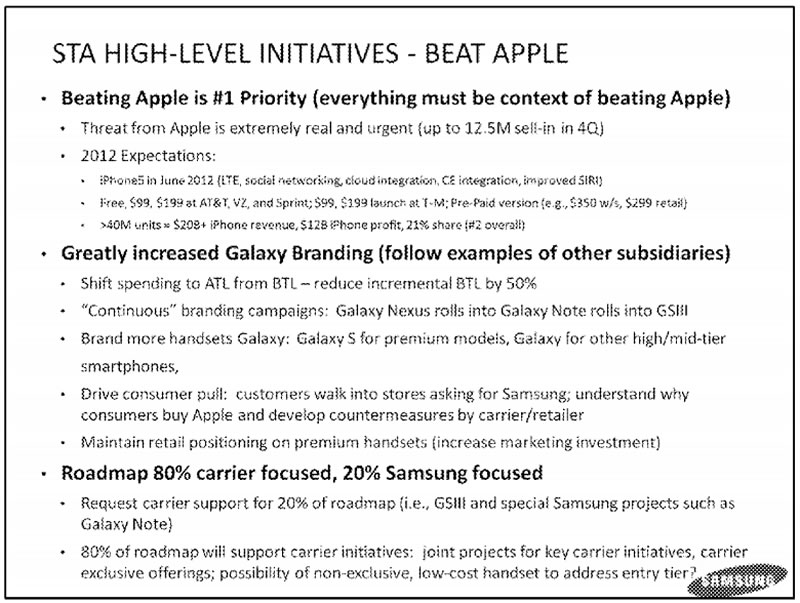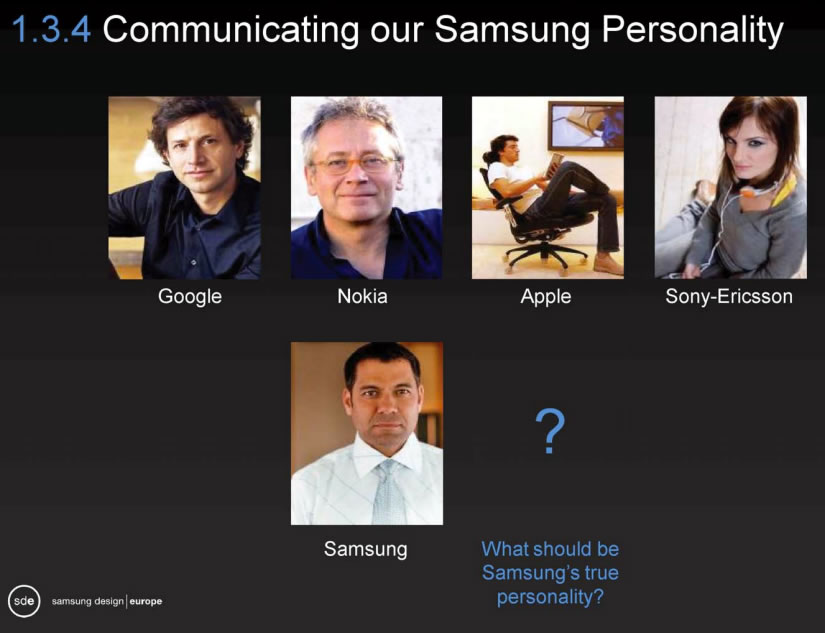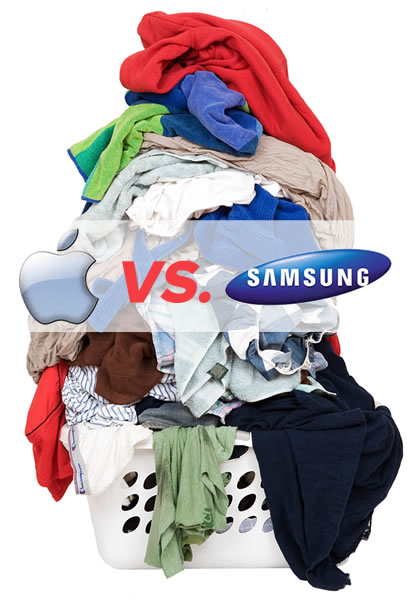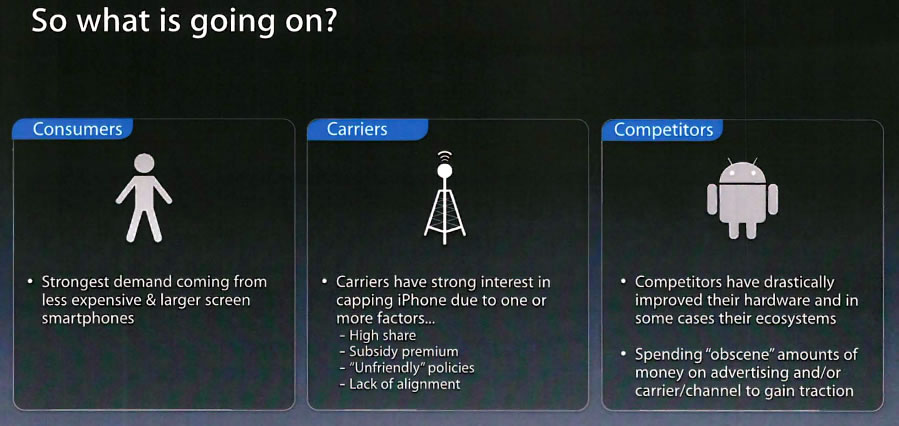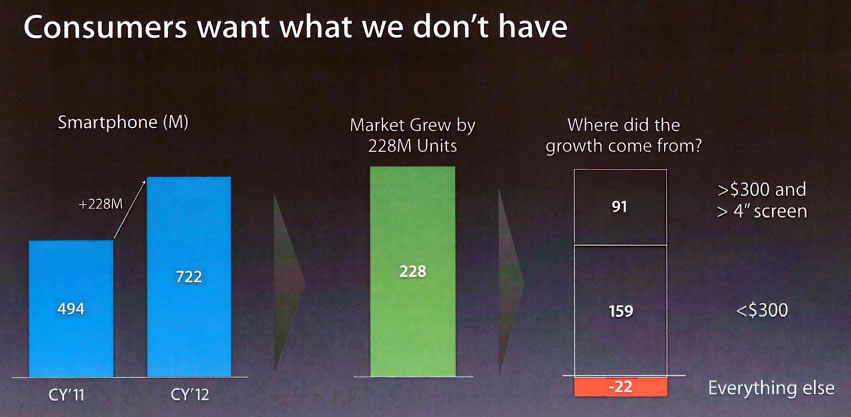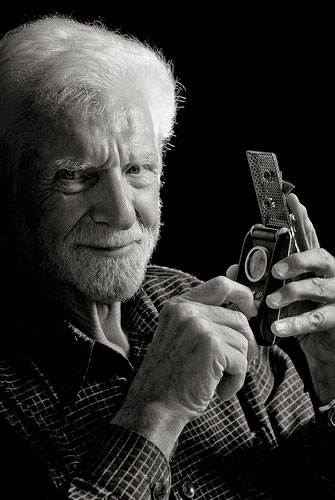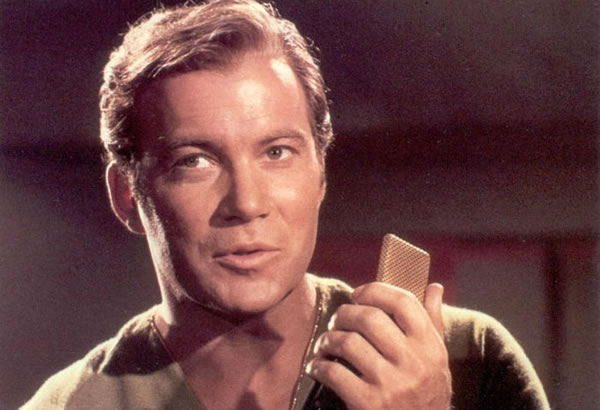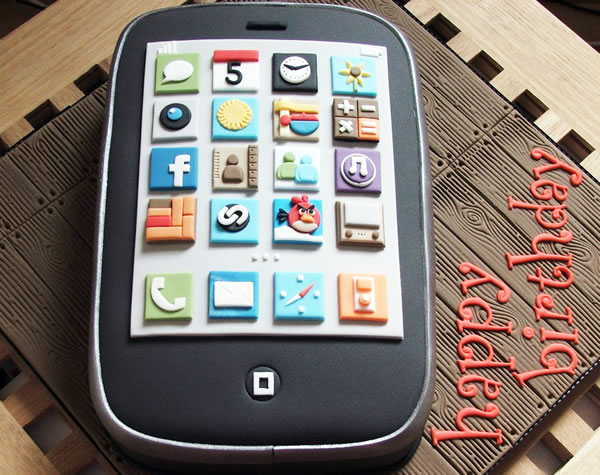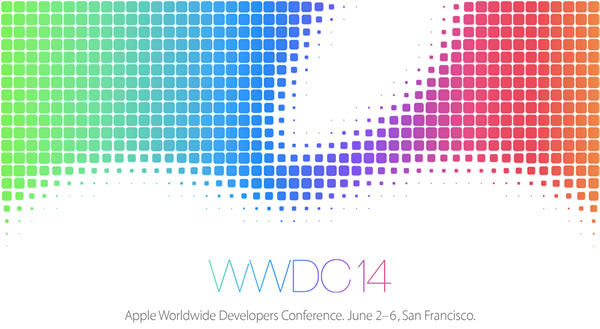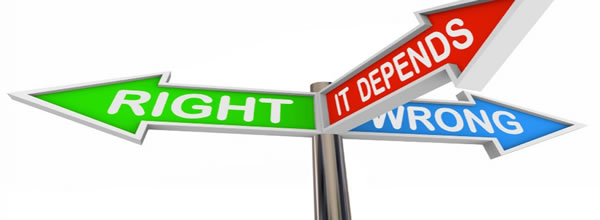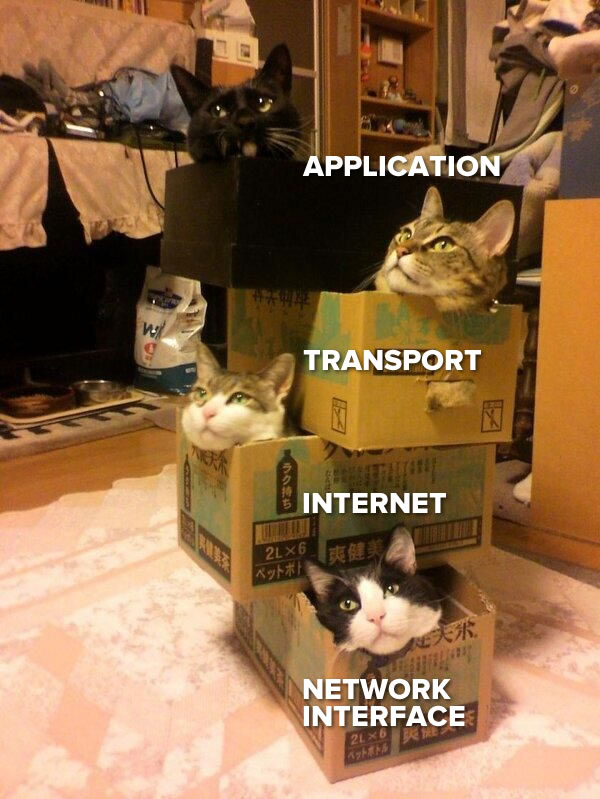The T-Mobile/BlackBerry breakup
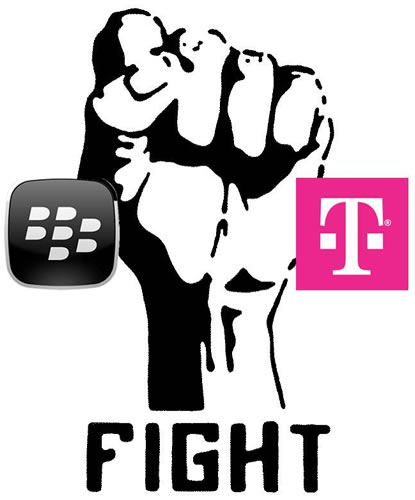
The spat between T-Mobile, the smallest major carrier in the US, and BlackBerry, the smallest major mobile platform, started with T-Mobile’s February email campaign aimed at BlackBerry users, encouraging them to switch to the iPhone 5S. BlackBerry CEO John Chen was very quick to chastise T-Mobile for the move, as were many of the BlackBerry faithful, who took to Twitter in a campaign with the hashtag #CHOOSEBLACKBERRY10.
T-Mobile CMO Mike Sievert reached out in a blog post aimed specifically at BlackBerry users with an offer of a $200 credit toward a new device in exchange for a working BlackBerry of any vintage, with an additional $50 savings on new BlackBerry Z10 and Q10 devices. This olive branch was likely undone by T-Mobile’s irreverent CEO John Legere who tweeted this shortly after:
In case you’re not up on your social media platforms, MySpace was once the premier social media platform, but has long since sunk to irrelevance (oddly enough, BlackBerry still has a presence there — a seemingly neglected one, but a presence nonetheless).
The licensing agreement that allows T-Mobile to sell BlackBerry products expires three weeks from now — Friday, April 25th — and quite unsurprisingly, BlackBerry has announced that it will not be renewing it. In response, John Legere said in an open letter to T-Mobile’s BlackBerry users that:
We hear you and stand with you. We always have and always will. So, obviously, we were disappointed in BlackBerry’s decision this week to end their agreement with us.
But here’s what really matters most for BlackBerry owners. Whether you’re an individual customer or business customer, nothing changes. Nada. Zero. Zilch.
…
In fact, to show our appreciation for all current consumers so passionate and loyal to all things BlackBerry, we’re offering a $100 credit toward any new device, including the BlackBerry Q10 or the Z10. And this offer is good through the end of the year. So you can take your time.
A number of news outlets, including Canadian newspaper The Globe and Mail have described BlackBerry as having “fired” T-Mobile, but as The Wire observes, “T-Mobile’s response is essentially, ‘You can’t fire us, because we already quit.'” BlackBerry devices haven’t been taking up much, if any, shelf space at T-Mobile’s retail shops for a while, and with even less market share than Windows Phone, their walking away isn’t likely to cause Legere to lose much sleep:
T-Mobile’s consumer-friendly approach is working
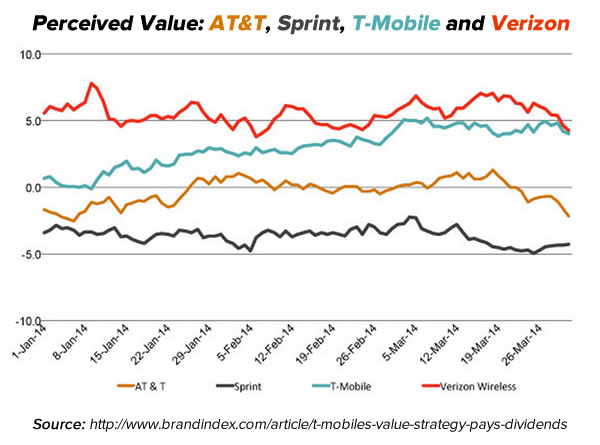
According to BrandIndex, a site that performs analytics on “public perception of thousands of brands across dozens of sectors”, T-Mobile’s “uncarrier” strategy has been paying off in terms of value perception. In ongoing surveys where participants are asked “Does it give you good value for what you pay?” about AT&T, Sprint, T-Mobile, and Verizon, the perception of T-Mobile has risen steadily since the beginning of the year. As of this writing, their value perception is tied with Verizon’s for first place.
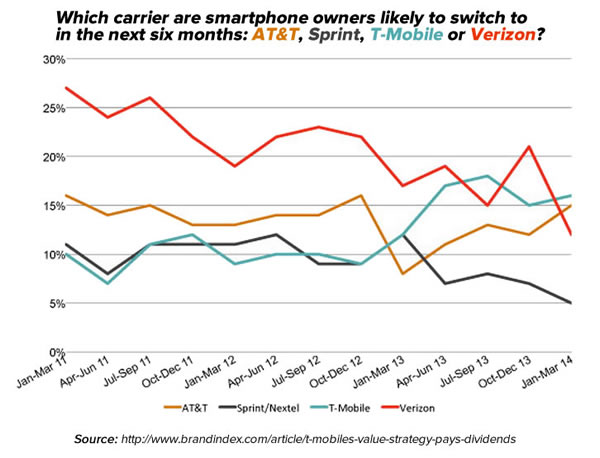
Their aggressive campaigning has also gained likely converts. Since the beginning of the year, smartphone owners looking to change carriers are increasingly naming T-Mobile, followed closely by AT&T, as their choice for a new carrier.
AT&T, Sprint, and Verizon respond
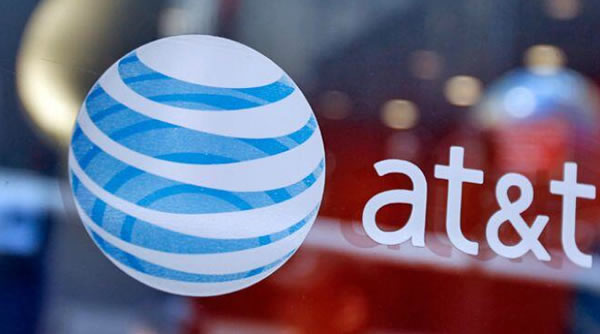
The other carriers have been affected by the T-Mobile strategy; it’s been forcing them to drop their prices for new customers to match or even beat competitors’ and to reduce prices for current customers in order to convince them to stay. AT&T introduced a rate cut for family-plan customers in February to bring their prices closer to what T-Mobile charges for a comparable deal ($140). This week, Verizon quietly cut their family rate to match AT&T’s. Sprint has introduced the “Framily” plans in response, but at $200 a month, their price is considerably higher.
Verizon has been able to charge premium rates, justifying them through their claim that they have the best network. This claim is backed by the August 2013 JD Power study and RootMetrics’ State of the Mobile Union report published in March 2014. Even so, the market has become considerably more price-sensitive, and Verizon don’t want to lose their most valuable customers: those in the 10-gigabyte-plus category, according to Current Analysis analyst Weston Henderek. The price cuts haven’t yet turned into a drop in the average revenue per subscription for them; in fact, this average rose to $157/month, an increase of 7%.
Verizon vs. T-Mobile, and OpenSignal’s take
With Verizon traditionally charging premium rates and T-Mobile aiming to gain customers by disrupting the way carrier charge, it’s no surprise that competition between then has been pretty fierce. Here’s an ad that Verizon’s been running for the past few months, which pokes fun at T-Mobile’s network coverage:
T-Mobile fired back, with both an announcement of “legal action demanding that Verizon cease and desist the carrier’s network map advertising” and this ad:
Of course, all this posturing doesn’t help us figure out which carrier actually has the best network. Once again, the answer is “it depends”, but there are some useful data, thanks to OpenSignal. OpenSignal are creating a database of cellular network towers, collecting data through crowdsourcing. Civic-minded users can download the free Android or iOS application and leave it running; it collects cellular networking information while running in the background, stripping it of identifying information as it does. In exchange for this volunteer effort, they create coverage maps that are freely available to view by anyone, anywhere, any time.
OpenSignal published their State of US LTE report in March, and based on the data collected from 103,025 users, they have determined that:
- Sprint has the most-improved LTE coverage over the past 6 months,
- Verizon has the best LTE coverage at 83.2%, and
- T-Mobile has the fastest LTE network, at 11.5Mbps on average.


Grace Murray Hopper (December 9, 1906 – January 1, 1992) was an American computer scientist and United States Navy rear admiral.[1]A pioneer in the field, she was one of the first programmers of the Harvard Mark I computer, and developed the first compiler for a computer programming language.[2][3][4][5][6] She popularized the idea of machine-independent programming languages, which led to the development of COBOL, one of the first modern programming languages. She is credited with popularizing the term “debugging” for fixing computer glitches (inspired by an actual moth removed from the computer). Owing to the breadth of her accomplishments and her naval rank, she is sometimes referred to as “Amazing Grace”.[7][8] The U.S. Navy destroyer USS Hopper (DDG-70) is named for her, as was theCray XE6 “Hopper” supercomputer at NERSC.

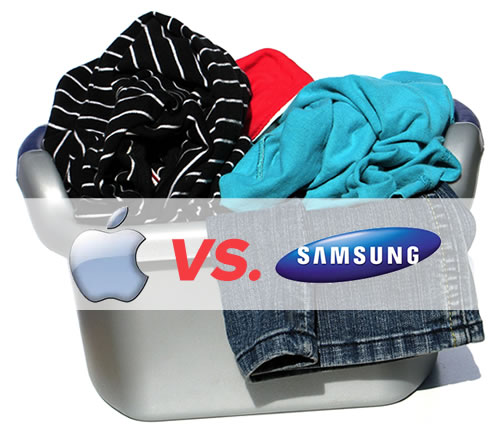
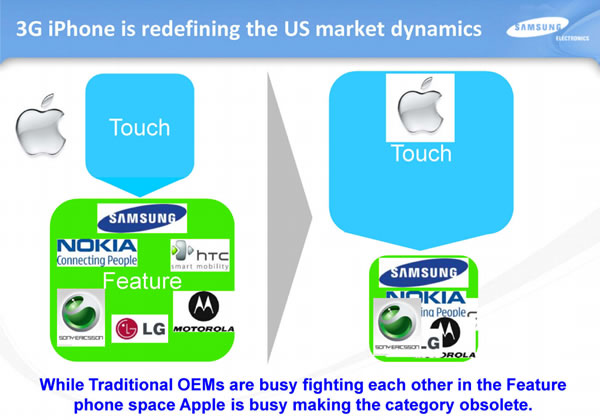 This first document is a slide presentation titled 3G iPhone US market impact,
This first document is a slide presentation titled 3G iPhone US market impact,